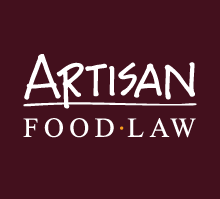We should be clear from the start that there is no such thing as 'artisan' food law. This may come as a surprise, though probably not. The reality is that the law which applies to the big industrial food processor is the very same as that which applies to the artisan and small-scale food producer. It is simply the context that changes and the way in which food law is interpreted and applied.
Food Law in the UK
A brief history of food law. The legal basis of food law in the UK and the continuing role of EU law that has now become domestic.
Food law is organised according to ‘horizontal law’, which applies to all foods, and ‘vertical law’, which applies to a food or group of foods. Horizontal law takes a general overview of a situation and facilitates implementation, particularly for food businesses working in diverse sectors. The vertical approach makes it possible to adjust legislation to the needs of a specific sector and may cover all aspects of a sector.
It helps to understand at the outset the aims and objectives of food law, which have remained fairly consistent over time, and how we came to have the system that today regulates the production, distribution and sale of food.
Throughout the twentieth century numerous consolidating and other statutes often dealing with specific foods were passed. The development of science meant it was to play a bigger role in the food industry. The focus began to shift from adulterants to the use of additives, preservers and improvers.
The food scares of the 1990s, none more so than the outbreak of Bovine Spongiform Encephalopathy (BSE) in beef, highlighted the European Commission’s inability to respond quickly and effectively in the emerging crisis. BSE is “commonly regarded as the ‘trigger’ for the reform of [the then] existing legislation and the establishing of new regulatory institutions across Europe.” Whilst the incidence of BSE was considerably higher in the UK in the years since 1987, cases throughout Europe resulted in an EU wide response.
Whatever the position taken on the 2016 referendum question and regardless as to how it is viewed with hindsight, Brexit represented a seismic shift into the unknown.
The summary provided here looks at the process that brought about changes in the law and how it may develop in the future. Most of the law relevant to artisan and small-scale food producers is derived from EU law so this is an important area.
On 31 December 2020 at 11.00 pm the United Kingdom completed the Brexit transition. EU law ceased to apply to the UK, except for all practical purposes it did apply. What was once EU law had simply become UK law, in the short term at least, it may subsequently be amended, repealed or simply kept.
In total there are some 19,000 EU legislative measures of which about 900 are directly concerned with food and drink.
Beginning in 1266 this chronology traces significant events which have helped to shape food law over the centuries and key milestones which have been reached. While there has undoubtedly been much change, particularly since the early 19th century, there is a surprising amount of consistency in the approach taken by the law in seeking to protect both consumers and honest traders.




